David Deamer: 1st Life & "The Lonsdale 8"
David Deamer: 1st Life & "The Lonsdale 8"
By Suzan Mazur
July 9,
2012
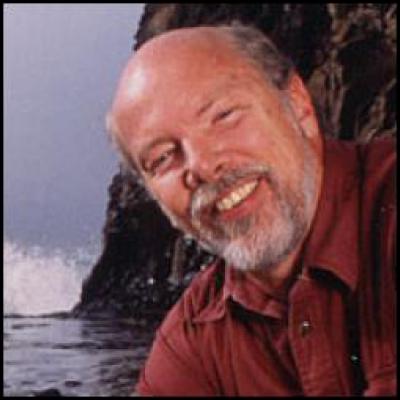
David
Deamer
"The Lonsdale Award received 76 entries, many from ISSOL [International Society for the Study of the Origin of Life and Astrobiology Society] members, of which 15 were selected for review. The panel is composed almost entirely of ISSOL members. [ISSOL president] Dave Deamer will chair the panel, and Ken Nealson is vice-chair. The review process will resemble that used in major funding agencies, in which a primary and secondary reviewer read the proposal carefully and report to the full panel during the meeting. This is followed by a discussion and a confidential vote in which each panelist ranks the proposal from 1 to 5, with 1 being the best score. After the meeting, Mr. Lonsdale will consider the panel scores, comments and recommendations, then choose the winner." -- ISSOL NewsRoom
David Deamer's trailblazing of prebiotics goes back to 1977 and a paper on lipids and membranes published in Nature, but his curiosity about origin of life dates to his teenage spelunking adventures growing up in Ohio in the 1950s. Then, in 1985, some years after the Murchison meteorite fell in Australia, Deamer began testing organic compounds extracted from the rock by adding water, which caused the material to self-assemble into naturally fluorescent vesicular structures.
Dave Deamer's work is now central to the investigation into origin of life. He is research professor in the Department of Biomolecular Engineering at the University of California, Santa Cruz, and this past year also served as a principal architect of Harry Lonsdale's Origin of Life Challenge, which announced its awards last month with Deamer among the top three prizewinners. According to ISSOL, the astrobiology society Deamer heads, Deamer chaired Lonsdale's peer review panel that judged the contest. So why would he accept a research award of $60,000 for his own proposal?
Deamer has told me that he left the room when the paper he collaborated on with NASA's Wenonah Vercoutere came before the panel of peers. Apparently Vercoutere was principal investigator.
Harry Lonsdale confirms that Deamer exited the room and I have not asked for further confirmation from the panel, partly because their names are supposed to be confidential, per the industry practice -- even though Lonsdale's Challenge was a private competition, not nationally funded and actually bound by secrecy, evidenced by various leaks on the Internet.
Here for example, in alphabetical order is the probable Lonsdale panel of "Pros," otherwise known as "The Lonsdale 8":

David Deamer, University of California - Santa Cruz
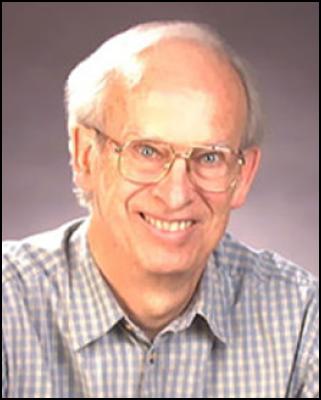
Jim Ferris, Rennselaer
Polytechnic Institute
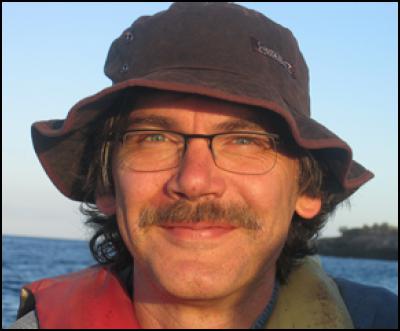
Peter Gogarten,
University of Connecticut
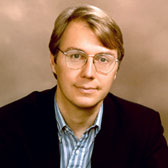
Andrew Knoll, Harvard
University
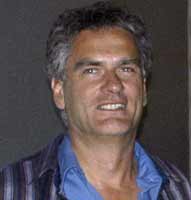
Chris McKay, NASA Ames
Research Center

Ken Nealson, University
of Southern California
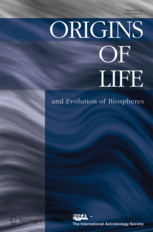
Alan W. Schwartz,
Radboud University (The Netherlands)
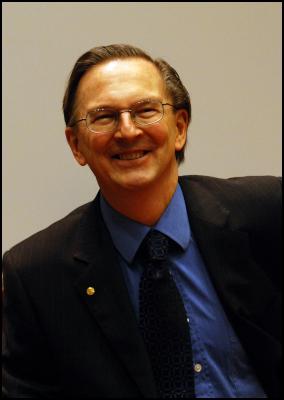
Jack Szostak, Howard
Hughes Medical Institute/ Harvard Medical School/
Massachusetts General Hospital.
David Deamer has further informed me that both he and Harry Lonsdale wanted his and Vercoutere's award run through the competition It remains unclear exactly why. Much of the award apparently will go to a hands-on research associate.
Deamer's comments below suggesting that he was on the panel because there is a scarcity of experts in the origin of life field may be an underestimation of the talent out there. It does not exactly mesh with the perspective of former NASA Astrobiology Institute chief Bruce Runnegar who told me that there are roughly a thousand people affiliated with NAI familiar with these matters.
The other issue is the direction of the research. America is a replication-oriented society. We love knock-offs. But red flags go up when the copy could be "us," which is what the Lonsdale prizewinners are currently investigating, whether life early on could have been a replicating entity, RNA.
Dave Deamer, who I've previously interviewed has six patents and is the author of 126 or so papers as well as 11 books, among them Being Human: Principles of Human Physiology, The World of the Cell, Origins of Life: The Central Concepts, and his most recent -- First Life.
His PhD is in physiological chemistry from Ohio State University School of Medicine and his BS is in chemistry from Duke. Honors include: Fellow, International Society for the Study of the Origin of Life (2002), Distinguished Lecture Series, Graduate Center, CCNY (2004), Distinguished Lecturer, Royal Society of New Zealand (1989), Guggenheim Fellow (1986) and the Westinghouse Science Talent Search (1957), among others.
Deamer serves on the editorial boards of the Journal of Bioenergetics and Biomembranes, Astrobiology and Origins of Life and Evolution of the Biosphere. He has previously served on the NASA Space Science Advisory Committee, NASA Astrobiology Roadmap Panel, and chaired the NASA Panel on Exobiology (1991-1995).
My recent interview with David Deamer follows.
Suzan Mazur: Would you address the perceived conflict of interest regarding your serving on Harry Lonsdale's peer review panel for the Origin of Life Challenge and you and your NASA partner accepting a research award of $60,000 from that same Origin of Life Challenge -- even though you say you recused yourself as your own proposal was being judged?
David Deamer: This is standard practice in peer review committees that I serve on both at NIH and NASA. The fact is that it's hard for a program manager to find people who do not have some degree of conflict of interest, because we're all interested in the same kind of research and have reached a certain level of expertise in the field. So it's very common for people to leave the room when their proposal is being judged by the peers. I had nothing to do with the peer review of our proposal, nor did I hear about the result until Harry called me later. I had no idea whether or not we were going to be among the winners.
There can be a perception of conflict, I suppose, but it's a practical necessity to bring in people who have expertise in order to judge other grant proposals.
Suzan Mazur: Why didn't you request your research funds be separate from the Challenge, since you advised Harry Lonsdale prior to the contest how to shape the contest? And it would look funny if you received an award within the same contest you were judging. Also, the peers, according to Lonsdale, were not paid.
David Deamer: Yes, I understand that. But, as I say, this is common practice in peer review panels of national funding agencies. The other thing is that this was a unique, privately- funded competition. I wondered about just the question you're bringing up, how would I be able to avoid a conflict. I think if you talk to Harry, he will say that I made every effort to keep apart from any aspect of the evaluation procedure of our proposal.
In terms of the other possibility that Harry would simply fund us separately, he could have made that choice but wanted to run it through the open competition, and so did I.
Suzan Mazur: Since you served on the peer review panel, which, according to Harry Lonsdale, recommended the contest finalists -- can you say why the favored research related to RNA replication, when the consensus among scientists who are thinking about the origin of life question is that something simpler came first?
David Deamer: This was an international competition where literally anyone could propose an idea and a feasible way to test the idea. That's just how science works. People have ideas, you find a way to test them -- if you're an experimentalist -- and you try to find funding to support the research.
So, why RNA compared to all the other possible proposals? Out of the 76 proposals that were submitted, about 15 went through a second selection process with some of Harry's trusted colleagues, and of those the panel decided to review 10 of them. Three happened to be from people working on RNA as a model system.
There's one other thing to keep in mind about how science is done. We need to be practical. The fact is there is a tremendous amount of information about RNA and how it can be handled experimentally. We don't have nearly as much information about other possible replicating systems of molecules that could be experimentally tested. So being practical, a good scientist will choose things that are feasible within their resources and time restraints. It so happened that of the 10 proposals that were reviewed, the three deemed most reasonable were the ones that focused on RNA.
Suzan Mazur: So Sutherland and Powner, their concept of feedstock molecules satisfied the criteria for possibly this simpler form feeding into RNA.
David Deamer: Yes. Sutherland and Powner published a remarkable paper in 2009 showing how these relatively complex nucleotides, the subunits of RNA, could be synthesized by a chemical process using feedstock. Their proposal was not just about RNA but trying to understand the chemistry of systems of molecules that could give rise to a variety of monomers of which the mononucleotides of RNA are one possible outcome.
Suzan Mazur: Did you and the panel have any interest in exploring alternatives to the classic origin of life scenario, say along the lines of animate and inanimate both being live systems, i.e., organized flows of matter and energy, and the Universe as a continuum not boxed into living and non-living?
David Deamer: The panel was a group of research scientists who are very well known. These are people who have made real contributions to the field, and they will be looking not just for novel ideas but for ideas that can be feasibly tested within the constraints of the support that Harry is able to provide. For that reason we did not consider pure idea papers. The panel was also looking for ways to test the ideas in order to advance our understanding of the field.
Suzan Mazur: Would you briefly describe your current experiment?
David Deamer: The main idea is that in a solution of monomers, such as monomers of RNA or DNA in solution, the laws of thermodynamics do not allow them to polymerize because there is a tremendous energy barrier to getting them to form bonds. We need to find a way to get them sufficiently concentrated in the absence of water, because water is what breaks these things down. We call that hydrolysis, the same thing that occurs during the digestion of food.
To get water out of the system we use anhydrous conditions. But if we just dry down a solution of potential monomers, it becomes a solid, and diffusion of the reactants cannot occur. Therefore, we have proposed that a liquid crystal can serve as an organizing matrix for the monomers. If we dry monomers in the presence of an organizing matrix, they have an increased chance to form the linkages that allow them to become polymerized. That's the basic idea that we are testing.
Suzan Mazur: You mentioned to me that you don't think your colleagues take your observations seriously. One of those critical of your work was the late Robert Shapiro, who wrote the following in Nature shortly before he died last year:
"Unfortunately, his [Deamer's] theory retains the improbable generation of self-replicating polymers such as RNA."
Shapiro wrote further regarding your call "for the construction of a new set of biochemical simulators that match more closely the conditions on the early Earth" that the chemicals you suggest using are, as Shapiro describes them, actually "drawn from modern biology, not from ancient geochemistry." He says, "We should let nature inform us, rather than pasting our ideas onto her."
Would you comment?
David Deamer: Yes. Bob Shapiro did a real service to our field by putting on his skeptic's cap and showing us where our ideas are soft. And that's easy to do, because this is a very young field. Only a few hundred people worldwide work in it. And there are lots of ideas floating around, but relatively little experimental work because of the funding situation. Research depends on funding, and NASA is the only source of funding right now for work on the origin of life. It's a limited pool of investigators and a limited pool of money.
The people who are making advances in the field, and I say this once again, are being practical. It is impractical for me as a research scientist to venture off to try a bunch of other ideas, such as Robert Shapiro has suggested. It's not the way I can convince a peer review panel to fund my research -- they would call it a fishing trip. I am trying to be practical about what I do, and RNA is a good place to begin.
Suzan Mazur: Have you gone as far as you can go with what Freeman Dyson calls the "garbage bag world," self-assembled lipid membranes, in terms of hoping to find a copying switch without resorting to mixing in these modern chemicals to force replication?
David Deamer: I worked in Doron Lancet's lab at Weizmann Institute for a while and we later published a paper called "The Lipid World," in which we described a compositional genome as opposed to a linear genome that contains information in polymers like RNA. That is, in fact, a pretty far out idea, but it's fun to think about. We actually tried some of the experiments to test the idea but didn't get very far.
I'm open to the garbage bag idea and compositional genomes, but I also think that life at some point began to use polymers as catalysts and replicating systems of molecules. For that reason, I'm trying to combine the idea of a self-assembled lipid structure -- a boundary layer, or a lipid membrane, if you will -- showing how that can organize the monomers in such a way as to take the next step into the polymers of life.
Suzan Mazur: So you don't have any choice but to mix in the mononucleotides.
David Deamer: It's the best game in town right now. It is.
Suzan Mazur: How do the "feedstock molecules" of the Lonsdale winning team of Sutherland & Powner differ from your self-assembled molecules?
David Deamer: I'm not sure how John Sutherland and Matthew Powner would define feedstock, but I assume that they mean relatively reactive simple molecules, simpler, in fact, than mononucleotides. However, one end product of the reaction pathways they are investigating is a mononucleotide, as they showed in their Nature paper. So if that's what they mean by feedstock, then that's not what my work involves because I don't do that kind of chemistry.
Powner and Sutherland are real chemists, organic chemists. They know a lot about how organic chemicals can behave as a feedstock and produce more complex molecules.
What I'm doing is taking the next step and saying given that more complex molecules can be synthesized, what can we do to get them to form polymers?
Suzan Mazur: Freeman Dyson told me that the garbage bag world scenario probably went on for a billion or more years before replication kicked in. Do you agree?
David Deamer: That's his guess. I'm not even sure I would want to try to guess, but it probably took longer than a week. In the next 10 years of my research career I'm hoping to achieve in the laboratory what we would call a self-assembled replicating system. That would be a convincing version of something emerging from Dyson's garbage bag ideas. At the start of the experiment there's nothing there but a mixture of monomers and lipid, but after we put them through the anhydrous cycling process there are polymers present. The next step is to see whether the polymers can function as catalysts, and perhaps even replicate in some way.
Suzan Mazur: So you don't agree with Freeman Dyson that it will probably take another century before we get to the bottom of origin of life.
David Deamer: I have heard from Harry Lonsdale that Sutherland thinks it might be 50 years, and Dyson's guess is 100 years. I don't want to limit it that way, I suppose, because nobody knows for sure. The breakthroughs when they come will be the sort of breakthrough Watson and Crick made when they solved the riddle of DNA replication in just a few years.
Suzan Mazur: Also, if you get more people working on the problem. A concerted effort.
David Deamer: Yes. Rosalind Franklin, of course, provided a very solid experimental test of their ideas. They really were idea guys. They did not test their model except against other people's work. They had a foundation.
Suzan Mazur: What is the importance of computer simulations in studying origin of life?
David Deamer: For one thing they're so much fun to look at. Have you seen the great molecular animations on Jack Szostak's website?
Suzan Mazur: No I haven't viewed those. I'll have a look.
David Deamer: Computer simulations stimulate the imagination. My brain, at least, can visualize things in the simulations that otherwise are just lines and letters on a printed page. Viewing three dimensional models moving around, obeying the laws of chemistry, Newtonian physics and the laws of force fields really does help. I use them in my lectures, they're a tremendous teaching tool.
Suzan Mazur: What value do you see in solving the origin of life mystery aside from satisfying human curiosity?
David Deamer: The easiest answer is spinoffs, if we're talking about applications. For instance, there's already been one spinoff from my work, which is a nanopore sequencing device. It was stimulated by my attempt in 1989 to get ATP into a model cell to suppport a polymerase inside. It occurred to me that maybe ATP would block the ionic current in a detectable way. Then if we pulled a whole string of nucleotides through the pore as a nucleic acid, each nucleotide -- there are only four of them -- would give a differential signal that would let us determine the base sequence of the DNA.
Twenty years later, a sequencing device is going to be marketed by Oxford Nanopore Technologies that resulted from origin of life work research supported by NASA.
Suzan Mazur: What value do you think people in general will derive from knowing the origin of life?
David Deamer: Most people would be interested in a scientific version of how life began. If they're scientists, they'll try it themselves, see if it works.
Suzan Mazur: Is your origin of life investigation also an exercise to dispel current creation myths?
David Deamer: I don't take it that way. It would simply be a scientific explanation that anyone can understand about how life began on a sterile Earth using only available energy sources and organic compounds.
Thoughtful, religious people could still be satisfied in their belief that a supreme intelligence put in place the laws of chemistry and physics. There's no scientific rebuttal to that belief. It would be a valid hypothesis if it could be tested.
 Suzan Mazur
is the author of The Altenberg 16: An Exposé; of
the Evolution Industry. Her interest in
evolution began with a flight from Nairobi into Olduvai
Gorge to interview the late paleoanthropologist Mary Leakey.
Because of ideological struggles, the Kenyan-Tanzanian
border was closed, and Leakey was the only reason
authorities in Dar es Salaam agreed to give landing
clearance. The meeting followed discovery by Leakey and her
team of the 3.6 million-year-old hominid footprints at
Laetoli. Suzan Mazur's reports have since appeared in the
Financial Times, The Economist, Forbes, Newsday,
Philadelphia Inquirer, Archaeology, Connoisseur, Omni and
others, as well as on PBS, CBC and MBC. She has been a guest
on McLaughlin, Charlie Rose and various Fox Television News
programs. Email: sznmzr@aol.com
Suzan Mazur
is the author of The Altenberg 16: An Exposé; of
the Evolution Industry. Her interest in
evolution began with a flight from Nairobi into Olduvai
Gorge to interview the late paleoanthropologist Mary Leakey.
Because of ideological struggles, the Kenyan-Tanzanian
border was closed, and Leakey was the only reason
authorities in Dar es Salaam agreed to give landing
clearance. The meeting followed discovery by Leakey and her
team of the 3.6 million-year-old hominid footprints at
Laetoli. Suzan Mazur's reports have since appeared in the
Financial Times, The Economist, Forbes, Newsday,
Philadelphia Inquirer, Archaeology, Connoisseur, Omni and
others, as well as on PBS, CBC and MBC. She has been a guest
on McLaughlin, Charlie Rose and various Fox Television News
programs. Email: sznmzr@aol.com


 Ian Powell: “I Can Confirm They Are Hypotheticals Drawn Largely From Anecdotes And Issues The Minister Has Heard About.”
Ian Powell: “I Can Confirm They Are Hypotheticals Drawn Largely From Anecdotes And Issues The Minister Has Heard About.” Gordon Campbell: On NZ’s Silence Over Gaza, And Creeping Health Privatisation
Gordon Campbell: On NZ’s Silence Over Gaza, And Creeping Health Privatisation Richard S. Ehrlich: Pakistan & China Down 6 Indian Warplanes
Richard S. Ehrlich: Pakistan & China Down 6 Indian Warplanes Keith Rankin: War In Sudan
Keith Rankin: War In Sudan Ramzy Baroud: Netanyahu's Endgame - Isolation And The Shattered Illusion Of Power
Ramzy Baroud: Netanyahu's Endgame - Isolation And The Shattered Illusion Of Power Jeremy Rose: Starvation Of Gaza A Continuation Of A Decades-old Plan
Jeremy Rose: Starvation Of Gaza A Continuation Of A Decades-old Plan